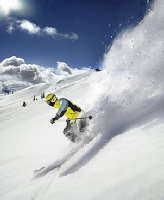Post Operative ACL Rehabilitation- what to do and what to expect

Most surgeons would agree that proper rehabilitation after reconstruction is as important as the surgery itself. The patient needs to be aware of what is involved before embarking upon surgery and be willing to put in the time and effort to ensure a good result. It is essential to have th
Is period supervised and directed by a physiothaerapist.
You may hear your physiotherapist talk about and direct you for:
Range of Movement (ROM) -
Muscle power -
Weight bearing -
Proprioception -
Plyometric-
Isokinetic testing -
The following indicates a typical rehabilitation programme
Phase 1 (0-
Reduction of Swelling
-
-
Weight-
Regain Range of motion
Start regaining quadriceps and hamstring strength
-
-
-
-
-
Phase 2 (2-
Reduction of swelling
Weight-
Regain normal range of motion
Start regaining quadriceps and hamstring strength
-
-
-
-
-
Phase 2 (2-
Reduce swelling.
Regain full knee extension and towards the end of this period, full flexion
Be able to squat
Regain balance
Re-
Use
-
-
-
-
-
-
Phase 3 (3-
The goals of this phase are to:
Regain full range of motion
Regain full strength and power
Increase agility and adaption to direction change, acceleration and deceleration
Be able to perform restricted sports-
Begin plyometric drills
-
-
Plyometric Drills
-
-
Isokinetic Testing
This is used to evaluate muscle strength.
The individual should have at least 90% quadricep strength of the uninjured leg
They should also have equal hamstring strength to their uninjured leg as well
| Personal Details |
| Orthopaedic Surgical Team |
| Personal Results |
| Background Information |
| Sports Injury |
| Arthritis |
| Surgical Guides |
| Pre Operative Guides |
| Post Operative Guides |
| Alexandra Hospital |
